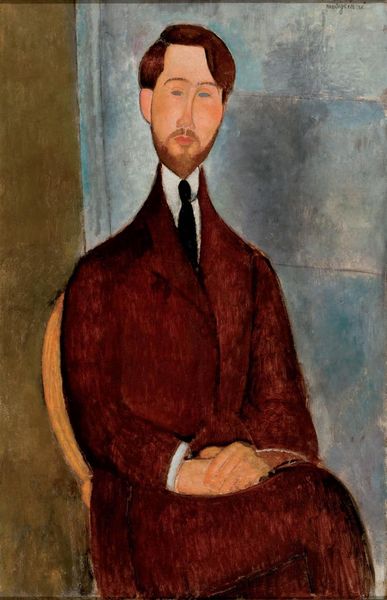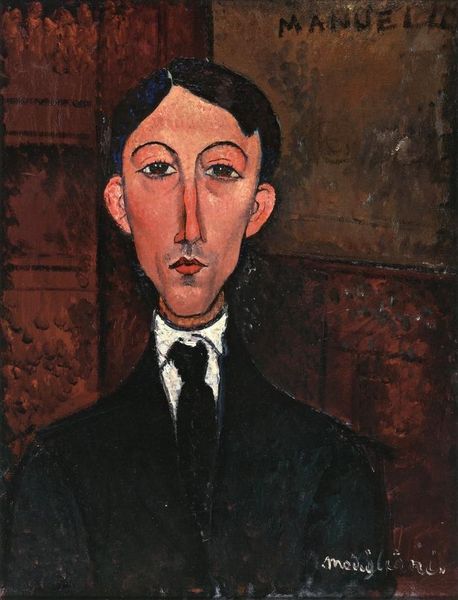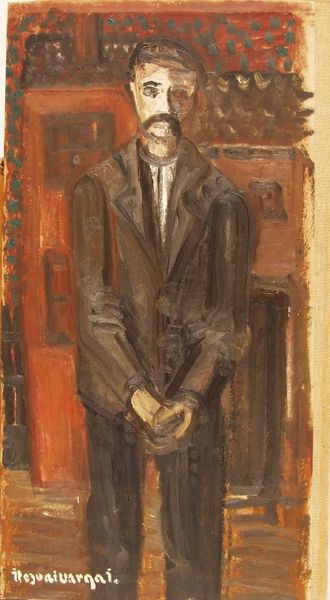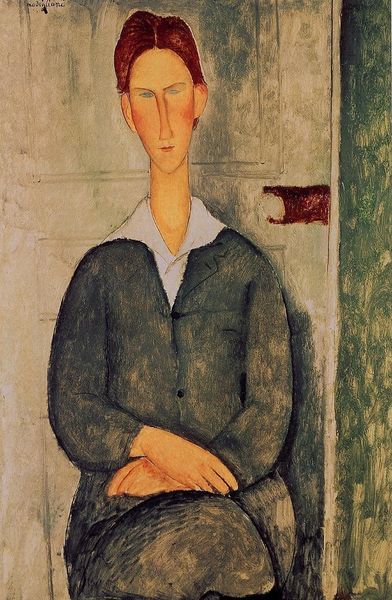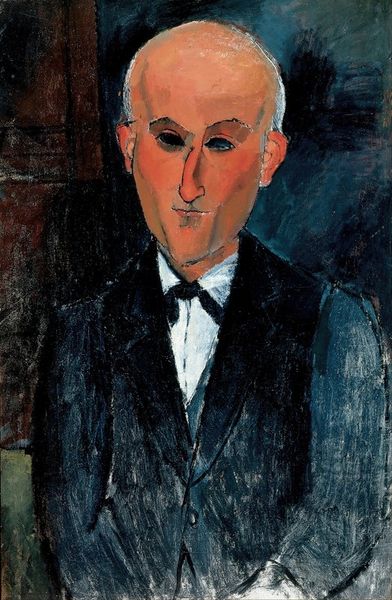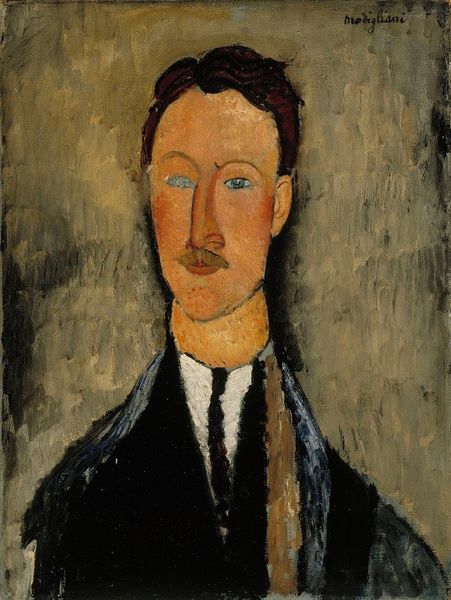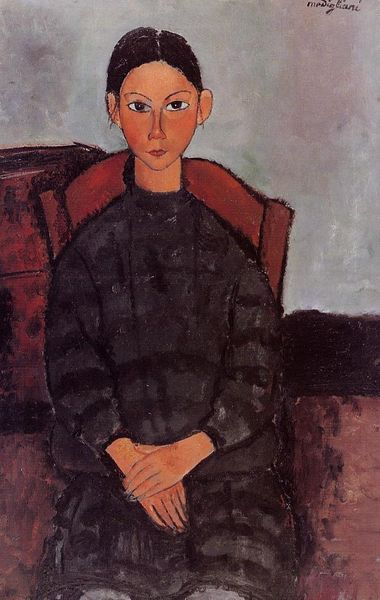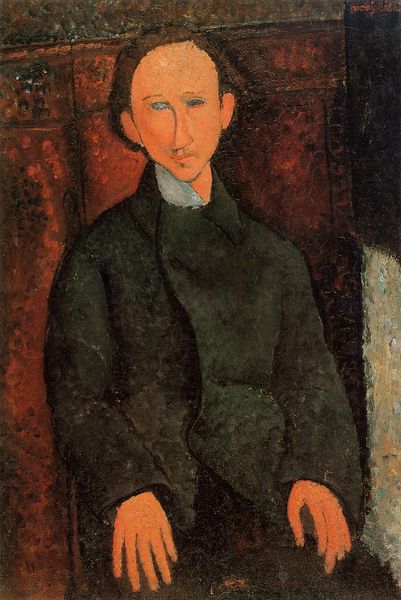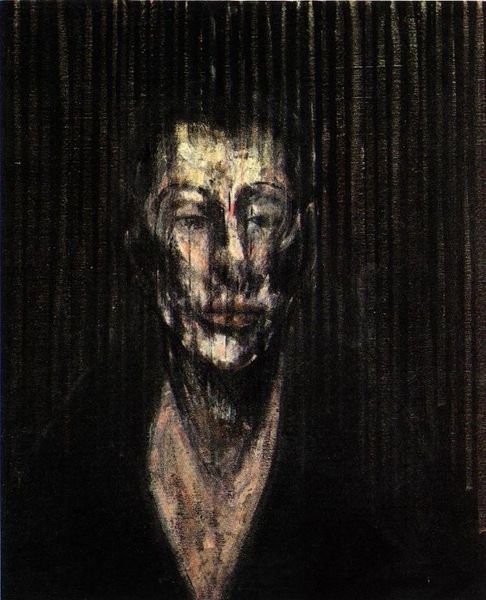
painting, oil-paint
#
portrait
#
painting
#
oil-paint
#
oil painting
#
italian-renaissance
#
modernism
Dimensions: 100.2 x 65.5 cm
Copyright: Public domain
Curator: This is Amedeo Modigliani's "Manuel Humbert Esteve," painted in 1916. It now resides here at the National Gallery of Victoria. Editor: Immediately, the elongated features and simplified planes give me a strong sense of Italian Renaissance portraiture filtered through a modern sensibility. It is so stylized and direct at the same time. Curator: Yes, and if you look at the oil paint itself, you can see how Modigliani applied it thinly, almost washing the canvas in places, which was key for quick and productive labor, since he relied so much on quick painting to produce a consistent income. The dark palette serves not just an aesthetic function but as an expedient choice. Editor: Absolutely. And consider the context in which this painting emerged. 1916, the height of World War I. How did the market for portraiture, especially amongst bohemian circles, change? Was there an increased need for works that projected an image of sober professionalism, even amongst artists? Curator: Precisely. And you can observe this professional pose with a somewhat simplified and reduced painterly expression, seemingly in a hurry. This would be related, not only to his own material limitations, but how he perceived the patron in a wartime context and what image of them to perpetuate in the public's perception. Editor: I find it fascinating to consider the role the NGV plays in exhibiting this piece today. Placing "Manuel Humbert Esteve," with its blend of modernist innovation and Renaissance homage, it emphasizes the legacy of high art which institutions need in order to justify their modern turn as legitimate progression. The history of modern art in Australia owes so much to the importation of that linear development. Curator: Exactly, even his artistic choices and means reflected the context of the time; these types of portraits were essential and sold quick for modest pay, which led him to keep making the portrait formula in all of its different faces and patrons. Editor: Thinking about this painting and our conversation helps me appreciate the multifaceted forces, both artistic and social, that shape artistic creation and institutional representation. Curator: Indeed. Considering its material constraints and labor processes grants further appreciation on why and how those forms came to be the way they are now presented.
Comments
No comments
Be the first to comment and join the conversation on the ultimate creative platform.

